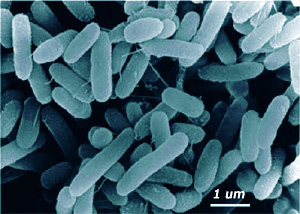Several strains of moderately halophilic and mesophilic bacteria were isolated at the head of an oil-producing well on an offshore platform in southern Vietnam. Cells were Gram-negative, non-spore-forming, rod-shaped and motile by means of a polar flagellum. Growth occurred at NaCl concentrations between 0 and 20%; the optimum was 5% NaCl. One strain, which was designated VT8, could degrade n-hexadecane, pristane and some crude oil components. It grew anaerobically in the presence of nitrate on succinate, citrate or acetate, but not on glucose. Several organic acids and amino acids were utilized as sole carbon and energy sources. The major components of its cellular fatty acids were C12:0 3-OH, C16:1 ω9c,C16:0 and C18:1ω9c. The DNA GMC content was 55.7 mol %. 16S rDNA sequence analysis indicated that strain VT8 was closely related to Marinobacter sp. strain CAB (99.8% similarity) and Marinobacter hydrocarbonoclasticus (99.4% similarity). Its antibiotic resistance, isoprenoid quinones and fatty acids were similar to those of Marinobacter hydrocarbonoclasticus and Pseudomonas nautica. However, the whole-cell protein pattern of VT8 differed from that of other halophilic marine isolates, including P. nautica. DNA–DNA hybridization indicated that the level of relatedness to Marinobacter hydrocarbonoclasticus was 65% and that to P. nautica was 75%. Further differences were apparent in Fouriertransformed IR spectra of cells and lipopolysaccharide composition. It is proposed that VT8 should be the type strain of a new species and should be named Marinobacter aquaeolei. P. nautica may have been misclassified, as suggested previously, and may also belong to the genus Marinobacter. Reference Huu, N. B. , Denner, E. B. M. , Ha D. T. C. , Wanner, G. and Stan-Lotter, H. (1999). Marinobacter aquaeolei sp. nov., a halophilic bacterium isolated from a Vietnamese oilproducing well. In International Journal of Systematic Bacteriology 49. 367–375. |
||
|
||
Marinobacter aquaeoloi

